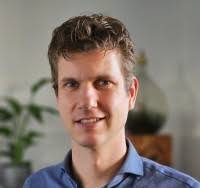Improved detection of tumour cells
- University of Twente
The story of spin-off FETCH
Cancer is a common disease that still claims many lives. There are many treatments for it, but choosing the right one sometimes remains a process of trial and error. Michiel Stevens, a researcher at the University of Twente, has found something to fix this. With his spin-off FETCH, he wants to offer doctors a tool that provides more insight into how the patient is doing so they can draw up a better treatment plan. 
Today's technology can detect tumour cells in blood. But in practice, that is easier said than done. “Once we have the tumour cell, we can isolate and analyze it. So that was not the problem,” Michiel explains. “The problem was finding these cells. If a biopsy is not an option, the alternative is to take a blood sample. You then add iron particles with antibodies that attach to the tumour cells. You may not find any tumour cells then. That doesn't mean they aren't there. So, you need a lot of blood to find the tumour cells. With diagnostic leukapheresis, we pass 2.5 to 5 litres of blood through a machine that filters out some white blood cells - a process similar to plasma donation. Because the tumour cells are also included, it is possible to analyze more blood. However, the method that was standardly used for tubes of blood turned out to be less suitable for this material and these larger quantities. In my experience, there was much room for improvement.”
RESULTS IN PRACTICE
Achieving that improvement is what Michiel then focused on for four years and obtained his Ph.D. “I don't want it to remain in the drawer as just a book,” says Michiel. “With samples from Erasmus MC, we have shown here in the lab that with our technology, we can also find and isolate larger quantities of tumour cells in larger quantities of blood. We can better measure what is happening in the body and which treatments are appropriate. Before doctors can use it themselves in the hospital, the technology must be further developed. I want to put the improvements we have made into practice. That is why we applied for a patent with Novel-T's help and ultimately founded the spin-off.”
...
To access the full article, click here



